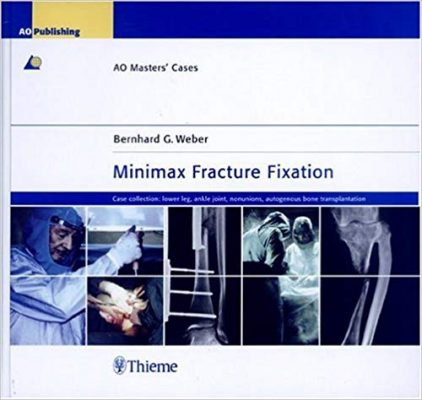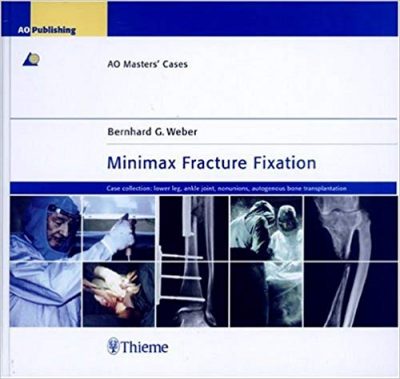 Author: Bernhard G. Weber
Author: Bernhard G. Weber
Publisher: Thieme – 208 pages, with 788 illustrations
Book Review by: Nano Khilnani
In this book the orthopedic problems and solutions are based on about 125,000 operations that took place over a period of 42 years (between 1960 and 2002) in the orthopedic department of County Hospital in St. Gallen, Switzerland, as well as some 20,000 surgeries performed by Bernhard Weber himself. The cases and the x-rays shown and discussed in this work were taken from a collection of about 80,000 slides of that hospital. So in that sense, this book is about a real as a book can get.
This book addresses specialists in orthopedic surgery, particularly pertaining to trauma care, and it is not meant for beginners in this field. In the Introduction to this book, Rene K. Marti, president of the AO Foundation from 2002 to 2004, discusses the ork and the creative, innovative thinking that guided Bernhard Weber in this manner:
“Unfortunately, Hardi (Bernhard) Weber’s still relevant books dealing with the classification of malleolar fractures, pseudarthroses, fractures in children, special osteosyntheses, and external fixators, are now out of print. Fortunately in this book, he presents a summary of his most important contributions with illustrations from his huge slide collection.”
“It certainly will stimulate all of us to really consider asepsis, to analyze fracture patterns and their possible complications, and finally their optimal, but individualized treatment possibilities. Many surgeons worldwide including myself, will confirm that Hardi Weber’s technical and more philosophical contributions influenced and will continue to influence our own view of orthopedic surgery.”
This compact book of just over 200 pages contains numerous (almost 800) images of several types that greatly aid in the learning process (you’ve heard the saying “a picture is worth a thousand words). There are numerous fine-line drawings and sketches, detailed charts and tables, highly educative before-and-after surgery photos of patients and their limbs and joints, and radiographs and x-rays with detailed captions. All these are essential to and understanding the topics covered, besides the text.
This book contains seven short chapters that we name below to give you an overview of what is discussed and illustrated in it:
- Asepsis and the risk of infection
- The MINIMAX principle for fracture care in adults
- Lower leg fractures with and without involvement of the ankle joint
- Open fractures of the lower leg
- Trauma of the ankle joint and of its neighborhood
- Biodynamics, classification, and treatment of non–unions
Autogenous bone transplantation
This is a short but excellently illustrated and written handbook with well-organized materials, on orthopedic surgery procedures, particularly on the lower leg, ankle joints, and other related matters. It is based on the work and innovative ideas of one of the world’s most renowned orthopedic surgeons – the German-born Bernhard Weber.







